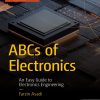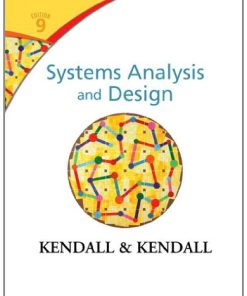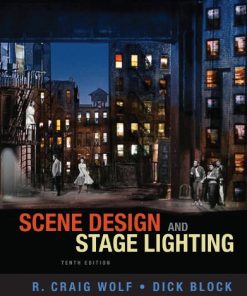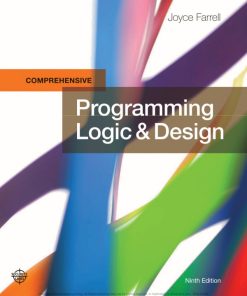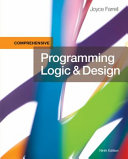Theatrical Design and Production An Introduction to Scene Design and Construction Lighting Sound Costume and Makeup 9th Edition by Michael Gillette, Rich Dionne 1265658199 9781265658199
$50.00 Original price was: $50.00.$25.00Current price is: $25.00.
Theatrical Design and Production: An Introduction to Scene Design and Construction, Lighting, Sound, Costume and Makeup 9th Edition by J. Michael Gillette, Rich Dionne – Ebook PDF Instant Download/DeliveryISBN: 1265658199, 9781265658199
Full download Theatrical Design and Production: An Introduction to Scene Design and Construction, Lighting, Sound, Costume and Makeup 9th Edition after payment.
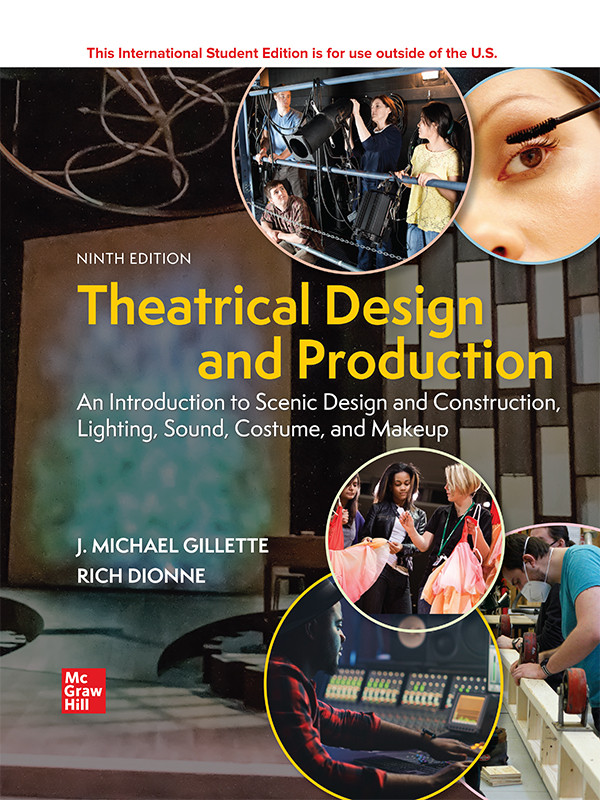
Product details:
ISBN-10 : 1265658199
ISBN-13 : 9781265658199
Author: J. Michael Gillette, Rich Dionne
Theatrical Design and Production is a comprehensive and practical survey that examines the technical and design aspects of play production, including scene design and construction, lighting, sound, costume, and makeup. Design is presented as both an art closely integrated with the director’s, actor’s, and playwright’s visions, and a craft that provides practical solutions for the physical manipulation of stage space.
Theatrical Design and Production: An Introduction to Scene Design and Construction, Lighting, Sound, Costume and Makeup 9th Table of contents:
Chapter 1: Production Organization and Management
Chapter 1 Introduction
The Production Sequence
Script
Concept, Design, and Construction
Rehearsals
Theatre Organization
Production Job Descriptions
Producer
Playwright
Director
Production Manager
Stage Manager
Scenic and Property Personnel
Lighting Personnel
Costume Personnel
Makeup Personnel
Sound Personnel
Chapter 2: The Design Process
Chapter 2 Introduction
Commitment
Analysis
Analyzing the Script
The Questioning Process
Research
Background Research
Conceptual Research
Incubation
Selection
Implementation
Evaluation
Chapter 3: A Brief History of Theatre Architecture and Stage Technology
Chapter 3 Introduction
Greek Theatre
Roman Theatre
Medieval Theatre
1500–1650
1650–1900
Twentieth Century
Chapter 4: The Stage and Its Equipment
Chapter 4 Introduction
Proscenium Stage
Proscenium Arch
Stage
Wings
Apron
Orchestra Pit
Auditorium
Proscenium Stage Equipment
Fly Loft
Fly Systems
Stage Drapes
Thrust Stage
Arena Stage
Black Box Theatres
“Found” Theatre Spaces
Chapter 5: Style, Composition, and Design
Chapter 5 Introduction
Style and Stylization in Theatrical Design
Production Style
Design Styles and Design Periods
Stylization
Literary Style and Theatrical Design
Elements of Design
Line
Shape
Mass
Measure
Position
Color
Texture
Principles of Composition
Unity
Harmony
Contrast
Variation
Balance
Proportion
Emphasis
Design Analysis of The Kitchen
Unity
Harmony
Contrast
Variation
Balance
Proportion
Emphasis
Chapter 6: Color
Chapter 6 Introduction
Defining Color
Color Terminology
Seeing Color
Color Mixing
Primary Colors
Secondary Colors
Complementary Colors
Filtered Light
Color Mixing in Paint
Integrated Color Wheel
A Practical Postscript to Color Theory
Application of Color in the Theatre
Meaning of Color
Practical Color Use
Color Analysis of Terra Nova and Cabaret
Terra Nova*
Cabaret*
Selected Reference
Chapter 7: Mechanical Drafting
Chapter 7 Introduction
Drawing for Envisioning and Inventing
Drawing for Communication
Drafting Symbols and Conventions
Line Weights
Line Types
Drafting Conventions
Lettering
Title Block
Dimensions
Symbols
Layers
Types of Drawings
Ground Plan
Sectional Drawings
Front Elevations
Rear Elevations
Detail Drawings
Selected References
Chapter 8: Perspective Drawing
Chapter 8 Introduction
Principles of Perspective
Creating a Perspective Drawing
A Review of Perspective Procedure
Perspective Exercises
Exercise 1
Exercise 2
Exercise 3
Exercise 4
Exercise 5
Exercise 6
Exercise 7
Exercise 8
Exercise 9
Chapter 9: Scenic Design
Chapter 9 Introduction
Considerations for the Scenic Designer
Mood and Spirit of the Play
Historical Period of the Play
Locale of the Play
Socioeconomic Level and Personality of the Characters
Season of the Year
Elements of Composition
Practicality of the Setting
Visual Presentation of Scenic Designs
Sketches
Models
Computer Presentations
Other Presentation Techniques
Designer’s Plans
Chapter 10: Tools and Materials
Chapter 10 Introduction
Hand Tools
Measuring Tools
Marking Tools
Hammers
Cutting Tools
Drilling Tools
Bits
Clamping Tools
Screwdrivers
Miscellaneous Hand Tools
Metalworking Hand Tools
Power Tools
Stationary Power Saws
Power Handsaws
Power Drilling Tools
Battery-Powered Tools
Pneumatic Tools
Metalworking Power Tools
CNC Tooling
Miscellaneous Power Tools
Wood
Stock Lumber
Molding and Trim
Sheet Stock
Sonotube
Manufactured Wood
Metal
Mild Steel
Proprietary Structural Systems
Aluminum
Plastics
Acrylic
Epoxy
Fluorocarbons
Polyesters
Polyethylene
Polystyrene
Polyvinyl Chloride
Urethanes
Fasteners
Nails
Screws
Bolts
Washers
Nuts
Glues and Adhesives
Glues
Adhesives
Hardware
Construction Hardware
Stage Hardware
Rope, Cable, and Wire
Synthetic Rope
Monofilament Line
Aircraft Cable
Wire
Block and Tackle
Safety Equipment
Selected References
Chapter 11: Scenic Production Techniques
Chapter 11 Introduction
Scenic Construction Techniques
Woodworking
Welding
Soldering
CNC Manufacturing
Two-Dimensional Scenery
Flats
Soft Scenery
Three-Dimensional Scenery
Stage Platforming
Stressed-Skin and Sandwich-Core Platforms
Platform Legging Methods
Stairs
Staircase Railings
Wagons
Trusses
Movable Scenery
Revolves
Skids
Winch-Drive Systems
Motorized Scenery
Motion Control
Platform-Anchoring Techniques
Rocks, Irregular Platforms, and 3-D Trees
Foam Carving
Selected References
Chapter 12: Scene Painting
Chapter 12 Introduction
Materials
Scenic Paints
Applicators
Auxiliary Scene-Painting Tools
Preparing Scenery for Painting
Repairing Holes
Applying Dutchmen
Flameproofing
Horizontal/Continental and Vertical Painting
Preliminary Coating
Size Coat
Prime Coat
Paint-Mixing Techniques
Casein
Latex
Vinyl Acrylic
Make Test Samples
Scene Painter’s Palette
Painting Techniques
Base Coats
Spraying Techniques
Cartooning
Grid Transfer
Standard Texture Coats
Applications of Painting Techniques
Specialized Finishing Techniques
Wallpapering
Drop Painting Techniques
Selected References
Chapter 13: Stage Properties
Chapter 13 Introduction
What Is a Prop?
Set Props
Hand Props
Decorative Props
Stage Weapons
Property Design
Real or Fake?
Property Organization
Property Acquisition
Organizing Props for a Production
Preproduction Planning
Running Props
Craft Techniques
Furniture
Wood Turning
Upholstery
Decorative Curtains and Draperies
Papier-Mâché
Vacuum Forming
Molds
Fake Food
Heat Forming
Automated Machining
Selected References
Chapter 14: Lighting Design
Chapter 14 Introduction
Controllable Qualities of Light
Light and Perception
Distribution
Intensity
Movement
Color
Functions of Stage Light
Visibility
Selective Focus
Modeling
Mood
Designing with Light
Key and Fill
Psychological Effects of Light
The Light Plot and Related Paperwork
The Light Plot
The Lighting Section
The Legend
The Instrument Schedule
The Image of Light
The Lighting Key
Using the Lighting Key to Draw the Light Plot
Layering
Designing Lights for Thrust and Arena Stages
Drawing the Light Plot and Lighting Section
Determining the Sectional Angle
Selecting Instrument Size
Rehearsal and Performance Procedures
Manual Preset Boards
Board Operator’s Cue Sheet
Designer’s Cue Sheet
Magic Sheet/Cheat Sheet
Lighting Rehearsal
Technical and Dress Rehearsals
Channel/Dimmer/Instrument Check
Selected References
Chapter 15: Electrical Theory and Practice
Chapter 15 Introduction
Electricity — What Is It?
Electricity at Work
Electrical Current
Ohm’s Law
The Power Formula
Electrical Circuits
Chapter 16: Lighting Production
Chapter 16 Introduction
Lenses and Lens Systems
Optical Theory
Types of Lenses
Lamps
Incandescent Lamp
Arc Sources
Light-Emitting Diodes (LED)
Color Temperature
Incandescent Lamp Structure
MR16 Lamps
Color Media
Lighting Instruments
Ellipsoidal Reflector Spotlight
Accessories
Fresnel Spotlight
Striplight
Cyc Light
Floodlights
PAR Can
Followspot
Intelligent Fixtures
Dimmers
Electronic Dimmer Control
Silicon-Controlled Rectifier Dimmer
Sine Wave Dimmer
Control Consoles
Wireless Dimmer Control
Computer Memory
Computer Board Control Capabilities
Cables and Connectors
Electrical Cable for Stage Use
Wire Gauge
Connecting Devices
Extension Cables
Circuiting
Permanent Wiring
Spidering and Multicables
Distribution Systems
Selected References
Chapter 17: Projections and Media
Chapter 17 Introduction
Film-Based Media
Digital Projectors
Liquid Crystal Display (LCD)
Digital Light Processor (DLP)
Digital Projector Characteristics
Contrast Ratios
Resolution and Format
Image Size and Lenses
Additional Functions and Concerns
Projection Design
Commitment
Analysis
Research
Incubation
Selection
Implementation
Evaluation
Projection Surfaces
Front-Screen Materials
Rear-Screen Materials
Projection scrims
Reflective Characteristics of Screen Materials
Keystoning
Projection Mapping
Focus Grid
3-D Modeling
Playback
Slide-Based Digital Systems
Cue-Based Systems
Timeline Systems
Media Servers
Display Technologies
The Future
Chapter 18: Costume Design
Chapter 18 Introduction
The Nature of Costume Design
Costume Design for the Theatre
The Psychological Meaning of Clothes
Objective Information Provided by Clothes
General Considerations for Costume Design
Analyzing the Script
Other Conceptual Considerations
Practical Considerations
Organizational Paperwork
Character/Scene Breakdown
Pieces (or Garment) List
Character–Performer Dressing List
Costume Calendar
Visual Presentation of the Costume Design
Preliminary Sketches
Costume Layout
Costume Rendering
Selected References
Chapter 19: Costume Construction
Chapter 19 Introduction
Organization of Costume Shops
The Costume Shop
Basic Equipment
Sewing Equipment
Fabrics
Fabric Fibers
Weaves
Fabrics and Nonfabric Materials Used in Costume Construction
Fabrics
Nonfabric Materials
Garment Construction
Patterns
Special-Effects Treatment of Fabrics
Fabric Dyeing
Fabric Painting
Costume Aging and Distressing
Costume Crafts
Wigs
Millinery
Footwear
Jewelry
Armor
Masks
Selected References
Chapter 20: Makeup
Chapter 20 Introduction
Designing the Makeup
Makeup Drawings
Skin Care and Skin Types
Types of Makeup
Cake Makeup
Creme Makeup
Liquid Makeup
Dry Makeup
Greasepaint
Rubber-Mask Greasepaint
Makeup Removers
Application Techniques
Highlights and Shadows
Highlight and Shadow Colors
Stippling
Contour Makeup
Three-Dimensional Makeup
Nose Putty
Derma Wax
Gelatin
Latex
Prosthetics
Beards and Mustaches
Selected References
Chapter 21: Sound Design and Technology
Chapter 21 Introduction
Sound in the Theatre
History of Sound Design
Music
Sound Effects
Sound Reinforcement
The Nature of Sound
The Sound Wave
Intensity
Frequency
Timbre
Sound Systems
Sound System Configuration
Sound System Components
Recording and Playback Equipment
Live Recording
Mixdown
Reinforcement Systems
Loudspeaker Placement
Rehearsal and Performance Procedures
Basic Acoustics
Installation, Verification, and Calibration
Sound Design Playback
Computer Playback
Playback Mixer
Selected References
Chapter 22: Drawing and Rendering
Chapter 22 Introduction
Materials
Pencils
Inks
Paint
Pastels
Markers
Paper
Computer Drawing
Drawing and Rendering Techniques
Sketching
Figure Drawing
Graphite Transfers
Scanning
Watercolor
Pastels
Pencils and Markers
Combined Media
People also search for Theatrical Design and Production: An Introduction to Scene Design and Construction, Lighting, Sound, Costume and Makeup 9th:
theatrical design and production 8th edition pdf free
theatrical design and production pdf free
theatrical design and production 9th edition
theatrical design and production 9th edition pdf
theatrical design and production gillette pdf
Tags: Theatrical Design, Production, An Introduction, Scene Design, Construction, Lighting, Sound, Costume, Makeup, Michael Gillette, Rich Dionne
You may also like…
Computers - Programming
Systems Analysis and Design 9th Edition Kenneth E. Kendall 0133023443 9780133023442
Computers - Programming
Programming Logic & Design, Comprehensive 9th edition Joyce Farrell
Computers - Programming
Programming Logic and Design Comprehensive 9th Edition by Joyce Farrell 1337517046 9781337517041
Uncategorized
Politics & Philosophy - Social Sciences
Politics & Philosophy - International Relations
The Globalization of World Politics: An Introduction to International Relations 9th Edition
Uncategorized
Theatrical Design and Production: An Introduction to Scene Construction, – Ebook PDF Version
Linguistics - Linguistics
An Introduction to Language, Australian 9th Ed 9th Edition Victoria Fromkin


